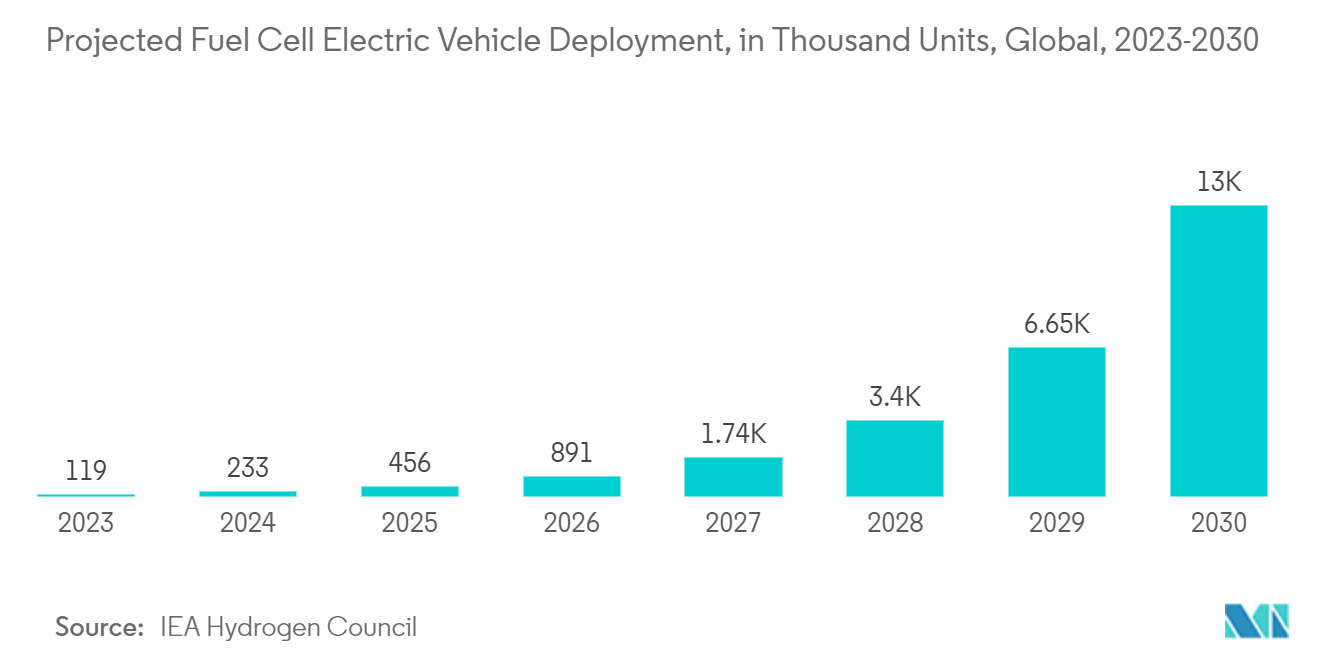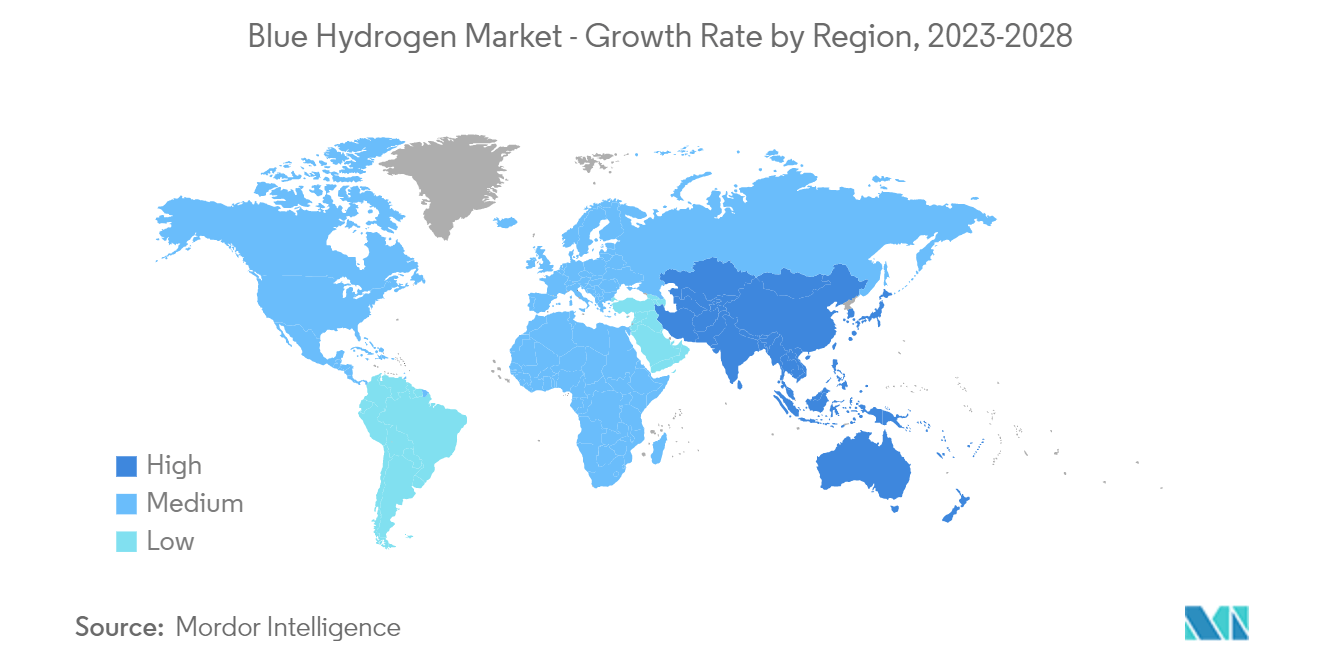Market Trends of Blue Hydrogen Industry
Surging Application of Blue Hydrogen in Fuel Cell Electric Vehicles
- Blue hydrogen can reduce CO2 emissions by displacing fossil fuels such as natural gas in domestic and industrial applications and oil in transport. Blue hydrogen includes the added advantage of allowing renewable and nuclear power to displace unabated fossil fuel electricity generation in electricity grids.
- Blue hydrogen can be the lowest-cost option to help decarbonize industrial heating, residential heating in extremely cold climates, and heavy-duty vehicles.
- The rising GHG emission from vehicles will likely boost blue hydrogen adoption. The transportation sector is responsible for 28% of greenhouse gas emissions. Therefore, electric vehicles have gained popularity because they emit zero emissions into the environment, low refueling costs, and maintenance costs. Hydrogen-powered fuel cells are pollution-free and can have two to three times the efficiency of traditional combustion technologies.
- China had the most sales in 2021, tripling those of 2020 with 3.3 million, followed by Europe with 2.3 million sales, an increase from 1.4 million in 2020. In 2021, 630000 electric vehicles were sold in the United States, doubling their market share to 4.5%.
- By the end of June 2021, more than 40,000 FCEVs were on the road worldwide. The fuel cell usage in electric vehicles, where the battery is recharged by hydrogen present in a tank, is introduced to promote the process of moving toward sustainable mobility. Compared to lithium-ion batteries, hydrogen FCEVs offer a substantial range advantage while being lighter and taking up less space. It is because hydrogen FCEVs have a far higher energy storage density.
- At the beginning of 2021, some 31,000 fuel cell electric vehicles (FCEVs) were recorded worldwide. Projections indicate a compound annual growth rate of some 95.4%5 between 2020 and 2030, with the global FCEV fleet reaching approximately 13 million units in 2030.
- Therefore, the factors above are projected to boost the consumption of blue hydrogen in FCEVs.

North America Expected to Dominate the Market
- North America is the largest consumer of blue hydrogen owing to the increased blue hydrogen application in transportation, petroleum refineries, and power generation industries.
- The chemical industry is a critical sector in developing innovative solutions to enable the shift toward sustainability and becoming net zero. Net-zero targets can be achieved through energy efficiency, bio-based feedstock, and closing material loops, stressing the need for other solutions such as hydrogen, carbon capture, and electrification in the chemical industry. About 10 million tons of hydrogen is used mainly as feedstock for producing ammonia and methanol.
- The growing chemical industry in the United States is likely to propel the application of blue hydrogen. The United States is the world's second-largest national producer of chemical products after China. In 2021, chemical shipments from the United States were worth USD 769 billion.
- Furthermore, hydrogen is commonly used in hydrocracking to create petroleum products, including gasoline and diesel. Refineries in the United States use 1.33 billion SCF of hydrogen each day to remove sulfur compounds from diesel fuel, gasoline, and other products.
- In North America, oil refining capacity amounted to around 21.4 million barrels per day in 2021, slightly down from 21.8 million barrels daily in the previous year. Between 2009 and 2021, North America's oil refinery capacity grew by 417 thousand barrels daily.
- Moreover, the United States uses many energy sources and technologies to generate electricity. The three major energy categories for electricity generation are fossil fuels (coal, natural gas, and petroleum), nuclear energy, and renewable energy sources.
- Canada will grow a domestic hydrogen economy, providing economic and environmental benefits nationally, lowering emissions in sectors like transportation, and positioning hydrogen as a key component of our net-zero future. For instance, in June 2022, Vancouver-based zero-emission vehicle company First Hydrogen announced that it would start testing its first demonstrator fuel cell electric vehicle (FCEV).
- Additionally, in March 2021, the Canadian Minister of Natural Resources announced that the Canadian Hydrogen and Fuel Cell Association (CHFCA) would receive USD 46,000 in funding to help promote the advantages of hydrogen fuel cell electric vehicles (FCEV), such as quick refueling times that make them a great choice for the bus and trucking industries.
- These trends mentioned above are the major factors driving the demand for blue hydrogen in the North American region.



